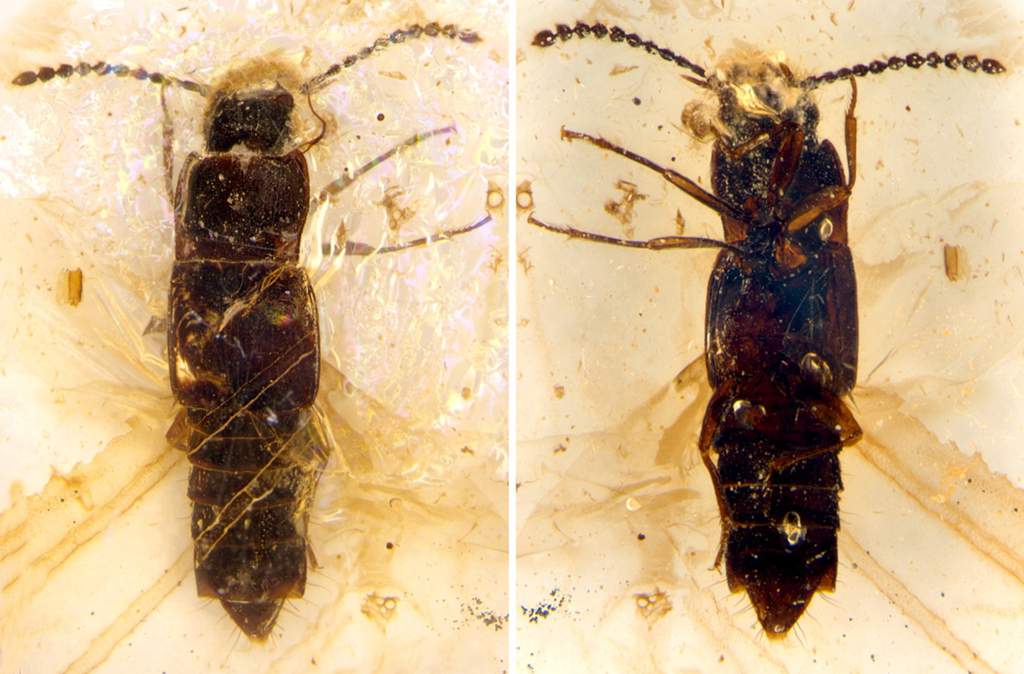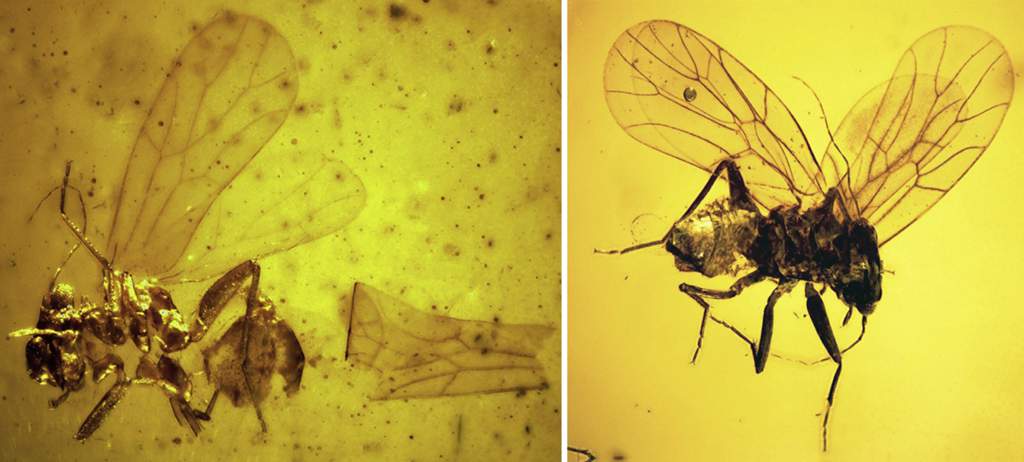Amber, known as “time capsule”, preserving excellent evolutionary fragments of early life in geological history, has become one of the research hotspots in palaeontology. Study on the amber inclusions in China is mainly focused on the Eocene Fushun amber; Since 70's of the last century, many publications including the book Amber Insects of China have been concentrated on the detailed study on insects in the Fushun amber. However, amber inclusions, especially those from foreign countries, are still poorly studied by Chinese scholars.
Amber from Kachin (Hukawng Valley), northern Myanmar, has been known in the Annals of the Han Dynasty (205-265 AD). Thus, Burmese amber has been known for about two thousand years, but the scientific collection of inclusion fossils was made approximately 90 years ago. Age of the material is currently accepted as earliest Cenomanian (Upper Cretaceous), about 99 million years old. Burmese amber probably harbors the most diverse biota in amber from the Cretaceous. Insect inclusions in Burmese amber are exceptionally well preserved and very diverse. Study on insects in amber is of great significance for understanding the early evolution, systematics, paleoecology and paleogeography of difference insect groups.
Recently, Prof. HUANG Diying from Nanjing Institute of Geology and Palaeontology, Chinese Academy of Sciences and his group, reported four new fossil insects in mid-Cretaceous Burmese amber, including Coleoptera and Psocoptera.
1. The first Mesozoic Micropeplinae. The staphylinid subfamily Micropeplinae includes small strongly sclerotized beetles with truncate elytra exposing most part of abdomen. Fossil micropeplines are rare and confined to Cenozoic representatives of extant genera. The oldest micropepline, Protopeplus cretaceus gen. and sp. n., is described from Burmese amber. Fluorescence microscope and confocal laser scanning microscopy (CLSM) were both used to reveal diagnostic features of Micropeplinae and some primitive traits that place Protopeplus very basally within Micropeplinae.
2. The oldest Osoriinae. The staphylinid subfamily Osoriinae is characterized by the absence of abdominal paratergites. A remarkable new genus and species, Mesallotrochus longiantennatus n. gen. n. sp., is described and figured using both light and fluorescence microscopes. Mesallotrochus is placed in the extant tribe Thoracophorini and is comparative to the extant subtropical/tropical genus Allotrochus. The new discovery of the oldest Osoriinae from about 99 million years not only suggests the antiquity of the subfamily, but also bears significant biogeographic implications.
3. The first described ground beetle. The ground beetle, or Carabidae, is one of the most common adephagan beetles. Cooperated with colleague from the Institute of Zoology, CAS, the first carabid from the Burmese amber is formally described and named as Oodes kachinensis Liu et al., 2014, which is placed in the extant genus Oodes of the extant tribe Oodini. The new discovery represents the oldest record for Oodes, bearing significant implications for the origin, early evolution and paleogeography of the genus.
4. The earliest Pachytroctidae. With colleague from the Lebanese University, two new genera and new species of Pachytroctidae (Psocoptera), Burmipachytrocta singularis Azar et al., 2014 and Atapinella garroustei Azar et al., 2014 are described based on two individuals preserved in Burmese amber. The positions of the new taxa are discussed and the fossils are compared to other pachytroctids. The described species represent the earliest records of the family Pachytroctidae, bearing significance for understanding the early diversification of the small group.
This research was supported by the National Basic Research Program of China, Outstanding Youth Foundation of Jiangsu Province, and the National Natural Science Foundation of China.
Related information of the paper:
1. Chenyang Cai, Diying Huang (2014) The oldest micropepline beetle from Cretaceous Burmese amber and its phylogenetic implications (Coleoptera: Staphylinidae). Naturwissenschaften doi: 10.1007/s00114-014-1221-z
2. Chenyang Cai, Diying Huang (2014) The oldest osoriine rove beetle from Cretaceous Burmese amber (Coleoptera: Staphylinidae). Cretaceous Research doi: 10.1016/j.cretres.2014.03.020
3. Ye Liu, Hongliang Shi, Chenyang Cai, Hongbin Liang, Diying Huang* (2014) The first record of Cretaceous ground beetle (Coleoptera: Carabidae: Oodini) from Burmese amber. Cretaceous Research doi: 10.1016/j.cretres.2014.05.013
4. Dany Azar, Diying Huang, Chenyang Cai, André Nel (2014) The earliest records of pachytroctid booklice from Lebanese and Burmese Cretaceous ambers (Psocodea, Troctomorpha, Nanopsocetae, Pachytroctidae). Cretaceous Research doi: 10.1016/j.cretres.2014.04.005

Fig. 1. The first Mesozoic Micropeplinae

Fig. 2. Details of Mesozoic Micropeplinae: a, b, CLSM images; d, f, Fluorescence microscope images; others, Biological microscope images

Fig. 3. The oldest Osoriinae

Fig. 4. The first Oodes ground beetle. Fossil species, Oodes kachinensis (left) ; Reconstruction of O. kachinensis (middle); Extant Oodes species (right)

Fig. 5. The earliest Pachytroctidae. Burmipachytrocta singularis Azar et al., 2014 (left); Atapinella garroustei Azar et al., 2014 (right)
